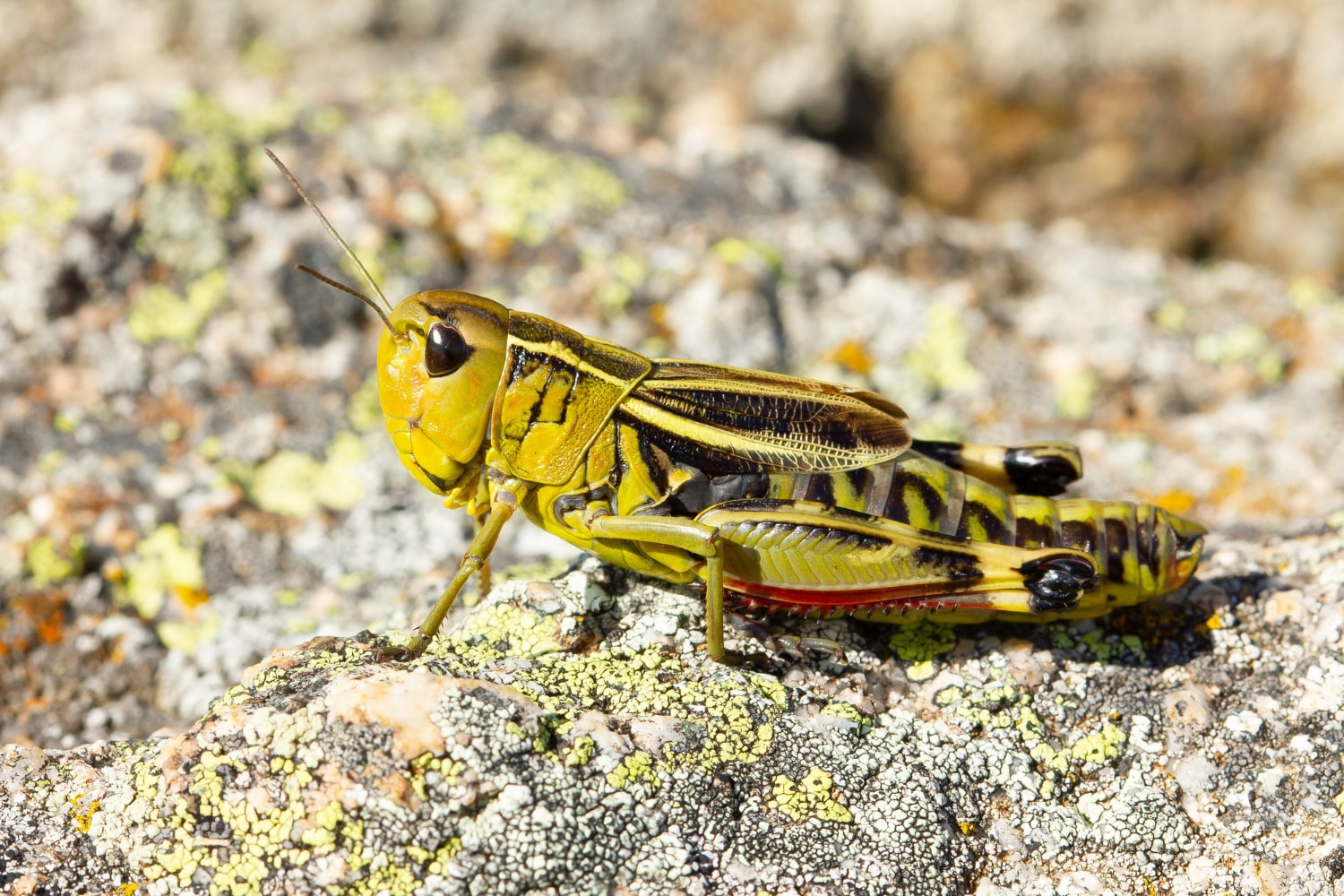Locusts are not just large jumping insects but also one of the oldest and most destructive pests in human history. In a matter of hours, they can devastate crops across thousands of hectares, often leading to famine in affected regions. At the same time, locusts are fascinating from a biological, behavioral, and ecological perspective. They possess unique adaptations that help them survive in extreme environments and act collectively in ways that captivate scientists. Below are some amazing facts about locusts that you might not have known.
- Locusts belong to the family of grasshoppers and share many similarities, though they are distinguished by their ability to exhibit swarming behavior. In normal conditions, they live solitary lives and pose little threat. However, when environmental conditions become favorable, they transform into aggressive and mobile swarms. This phenomenon is called phase polymorphism.
- During this phase change, locusts alter not only their behavior but also their appearance. Their coloration becomes darker or more contrasting, and their body size increases. These changes help them move in formation and avoid predators more effectively. It is a remarkable example of phenotypic plasticity.
- A single swarm of locusts can consist of billions of individuals and cover areas of several hundred square kilometers. In flight, the swarm may stretch over dozens of kilometers. Locusts can travel more than 150 kilometers in a single day in search of food. Their speed and numbers make them a force of nature.
- One swarm of locusts can consume in a day as much vegetation as would feed 30 to 40 thousand people. They devour not only leaves but also fruits, stems, and even the bark of young trees. This leads to drastic drops in crop yields and can cause severe food shortages in vulnerable regions. As a result, locusts are considered a major threat to agriculture.
- Locusts have powerful hind legs that allow them to jump distances up to twenty times the length of their bodies. This is their primary means of movement over short distances. Additionally, they have well-developed wings that enable them to fly across vast areas. Their muscles are adapted to sustain long flights during migration.
- Locusts navigate using sunlight and Earth’s magnetic field. They possess complex compound eyes that provide a wide field of vision. This allows them to detect danger from multiple directions. Their antennae serve as sensitive organs for smell and touch.
- Locusts are herbivorous but have an enormous appetite. They feed on almost all types of green vegetation, including grains, vegetables, fruits, and wild plants. They are not deterred by toxic or thorny plants. This makes them particularly dangerous in arid regions with limited vegetation.
- There are many species of locusts, but the most destructive is the desert locust. It is found in North Africa, the Middle East, South Asia, and as far as India. This species can sweep across entire countries in just a few days. Most large-scale locust crises around the world are caused by this species.
- The transition from solitary to gregarious form is controlled by chemical signals. When population density reaches a critical point, serotonin is released, triggering behavioral changes. This process is studied at the cellular level and helps scientists understand collective behavior in nature. Similar mechanisms have been observed in other animal species.
- Female locusts lay their eggs in the soil inside specially formed capsules. One clutch can contain up to 100 eggs, and a female may lay several clutches during a single season. The hatched nymphs are wingless at first and go through several molts. Eventually, they develop into fully mature locusts.
- In some cultures, locusts are consumed as food. They are rich in protein, iron, and vitamins and are considered a delicacy in certain countries. Locusts can be fried, dried, or ground into powder. This approach turns a threat into a valuable resource.
- In ancient times, locusts were viewed as a divine punishment, as reflected in religious texts like the Bible, the Quran, and others. Their swarming was seen as a sign of divine wrath and impending disaster. They were often depicted in engravings as symbols of destruction. The image of locusts has become deeply rooted in global mythology.
- Various methods are used to combat locusts, including biological, chemical, and mechanical techniques. Pesticides are the most effective but carry environmental risks. In some areas, fungi or bacteria that target only locusts are used. Monitoring systems have also been developed to detect swarms early and prevent outbreaks.
- Locusts are sometimes bred in captivity as food for animals or for scientific study. They reproduce easily and require minimal care. They are often used in zoos, terrariums, and reptile farms. This helps manage their populations in a controlled setting.
These incredible facts about locusts show why they are both feared and studied with great interest. Their ability to change behavior, adapt to conditions, and form massive swarms is astonishing to both scientists and the public. Locusts remain a key part of ecological systems and human cultural memory. You might not have known that such an ordinary-looking insect hides so many extraordinary traits.





